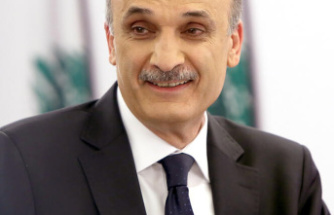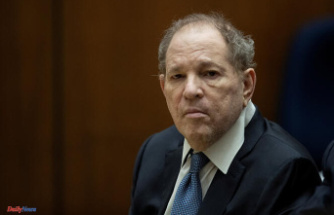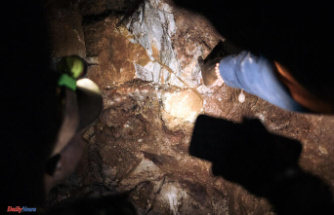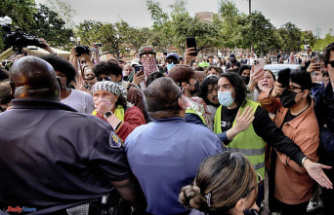"My colleague, my friend, my inspiration, my rival." This was how George Lucas defined Steven Spielberg, when it was already two colossus that had taken the cinema to very, very distant galaxies and had filled him with extraterrestrial creatures, a socarrón archaeologist and computer dinosaurs. Both went from being unwanted solitary to the banners of that new Hollywood who sought new ways of expression and ended up sitting the bases of franchises that reign today. Now, when 50 years of the premiere of his raw operas are met, he touches the look back to see to what extent they conditioned their trajectories.
On January 19, 1968 there was a historic meeting at the Royce Hall of UCLA, where the National Student Film Festival was held. There were George Lucas, bearded cinema student who presented his short experimentally exposed Electronic Laberitno Thx 1138 4EB, and an IMberbe Steven Spielberg, at the end of the first-year student at the Long Beach State University. "My first impression was I hate that boy, he is much better than me!", Spielberg would remember in the documentary creating an empire. Both he hit him the viewing he managed to overcome the pathological shyness of him to sneak behind the scenes and showed up against Lucas to tell him how much he had liked that abstract and fascinating film artifact. As Brian Jay Jones recalls in his unauthorized biography of Lucas (edited in Spain by Restoir Books), a handshake se sealed the starting point of a friendship that would change the cinema and popular culture forever.
Thanks to Coppola's tricks at the head of its incipient producer, American Zoetrope, Lucas got the money necessary to finance the long version of the short that had impacted Spielberg so much. Throw, Thx 1138 was born, a distopy of a disturbing future on the line marked by Aldous Huxley and George Orwell, in which a man and a woman rebelled against the machines. In the search for him by "creating emotions through pure cinematic techniques", that young californian pasta glasses took advantage of all the resources he ordered to create an oppressive atmosphere.
Paradoxes of life, the guy who would end up turning the marketing and sales of toys into something more important than the script of a film aimed that his cinematographic debut was a radical critique against prevailing consumerism and conformism in Nixon America. The result was in itself an arduous fight against the Gerifals of the Warner, who had put the money and intruded into the final assembly. A painful defeat for a Lucas who did not succeed at a box office either, which led him to live a few years of an economic and existential zazobra until he managed to shoot the second film of him, American Graffiti, which would be, this time, a resounding success. The impact of it paved the path of a strange and very personal Space operates called Star Wars, inspired by the passion of him by Flash Gordon comics and Akira Kurosawa films.
Meanwhile, Spielberg had made a hole in the television division of the Universal, directing episodes of series as a night gallery or Colombo, but his definitive leap would give him a telefilme based on a story of Richard Matheson, originally published in the Playboy magazine. More than the core poster bunny pneumatic, Spielberg caught the attention that story of terror in which the driver of a car was besieged by a mysterious truck. Again the man against the machine, although in this case without futuristic alibi, only a road to hell.
Thus, the devil was born on wheels (available in Filmin), a psychological thriller trepidant who remains today a master class of how to plan, shoot, ride and, ultimately, narrate a persecution. The anguished duel between any man and that personification of the evil of 20 tons and oxidized aspect had such a repercussion that allowed him to start a film career that would reach the stratosphere thanks to shark and meetings in the third phase.
Together or separately, Lucas and Spielberg changed the way to do, promote, distribute and watch movies. Emulating Indiana Jones, the character who joined them forever as producer and director and whose fifth installment is scheduled for 2023, both ventured into the jungle of studies in search of the definitive treasury: creative freedom and total control of their projects . If Lucas is "Thomas Edison of the modern cinema industry," according to Peter Jackson, Spielberg was the one who defined an irresistible way to capture the attention of the spectator. The unequal contribution of it as directors (Spielberg wins 34 to 6, although it is not just quantitative) should not overshadow the contribution of Lucas as responsible for the technological transformation of the industry.
One remains behind the camera to direct films such as the West Side Story Remake that will arrive on December 22 to Spanish Salas. The other, withdrawn, when you are not counting tickets at your Skywalker ranch is turned in the latest details of Lucas Museum of Narrative Art, with an inauguration planned for 2023 and an investment of more than a billion dollars. Both, united by nostalgia, friendship and love of cinema, continue to have much to say 50 years after their first film.
Date Of Update: 08 December 2021, 10:25











